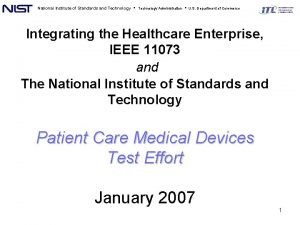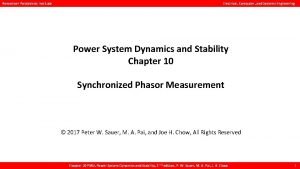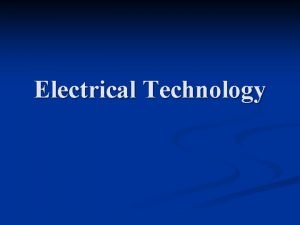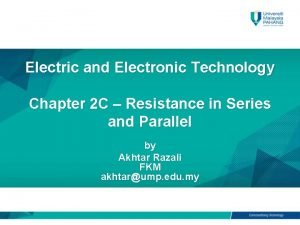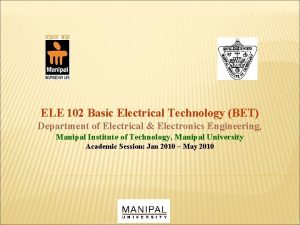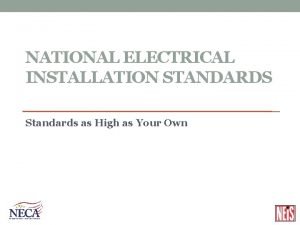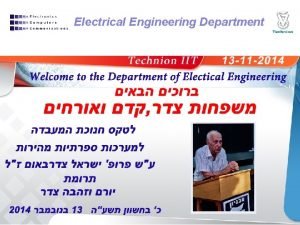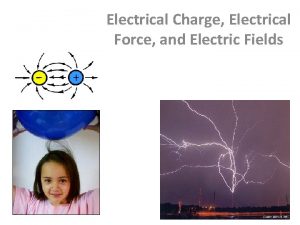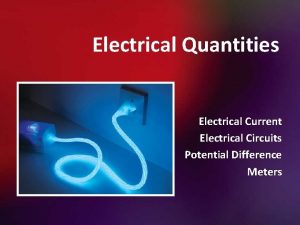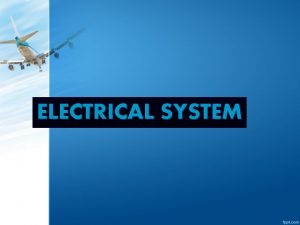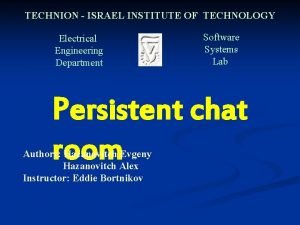National Institute of Technology Uttarakhand Department of Electrical














- Slides: 14

National Institute of Technology, Uttarakhand Department of Electrical Engineering Bidirectional Energy Meter with APFC Guided By: Mr. Himesh Kumar Project by: Ritik Singh Bhumika Meena Anuj Kumar Junaid Alam

Content ü Introduction ü Features: ü Bi-directional Metering ü APFC ü Smart Metering

q. Introduction ü Present system consume more time. ü Traditional billing system inaccurate. ü Provides Real time monitoring. ü Visibility ü Accurate billing ü Efficient power management.

q. Features This project is a combination of Bi-directional metering, Automatic Power Factor Correction unit & Smart Metering. Bi-directional metering: Bidirectional meter measures power flows going into & out of our home or business. Automatic Power Factor Correction unit: - Smart metering As it is conneted to internet so our data updates in real time. It fetch the Price from “Vidyut. Pravah. in” and upload the power data to Thinkspeak and deliver message to customer mobile number.

Bidirectional Net Meter ØBidirectional meter measures power flows going into & out of our home or business. Ø Allows businesses and individuals generating their own electricity to deliver unused energy back to their local power grid ØBidirectional meter has three different readings: a) Delivered: power flow going into the home. b) Received: power flow coming out of the home. c) Net: difference between delivered and received.

MATLAB SIMULATION ON BIDIRECTIONAL POWER FLOW

Voltage Sensor (ZMPT 101 B) & Current Sensor (ACS 712)

Benefits of Bidirectional Net Meter Ø benefit of net metering is that it can help reduce your yearly spending on electricity. Ø Helping to reduce demand on the grid, especially during peak consumption periods. Ø Encouraging active participation in alternative energy production.

APFC Power Factor Measurement

Smart Meter Introduction: - As it is conneted to internet so our data updates in real time. Its contain two parts: - ü Fetching live data from the internet. ü Uploading the data from our project to internet.

q Fetching of data from internet ü Our Wi-Fi module is connectd to internet through mobile hotspot or can be connected to any near by available Wi-Fi. ü It connects to the API of site “Vidyut. Pravah. in” for fetching the live price data and update itself after every 15 minutes. ü The price value is passed to Arduino Mega through Serial Communication between Arduino Mega and Wi-fi module. ü Energy cost is calculated by using the energy consumed by load and price data fetched by Wi-Fi Module.


q Uploading data to internet. ü Data servers of Thingspeak is used. ü Power data from Arduino Mega is passed to Wi-fi module through serial communication. ü The power Data is then uploaded to Thingspeak in real time. ü A message is delivered to the customer if they consume more reactive power even after they have fully utilized the capacitors and power factor is not becoming unity.

 9300 to 34800
9300 to 34800 Ulsan national institute of science and technology (unist)
Ulsan national institute of science and technology (unist) Assistive technology implementation plan
Assistive technology implementation plan National institute of standards and technology
National institute of standards and technology National institute of agricultural technology
National institute of agricultural technology Rensselaer polytechnic institute electrical engineering
Rensselaer polytechnic institute electrical engineering Electrical engineering department
Electrical engineering department Tum
Tum Ucla systems engineering
Ucla systems engineering Define electrical technology
Define electrical technology Electrical technology chapter 2
Electrical technology chapter 2 Structure of power system
Structure of power system Electrical technology grade 12
Electrical technology grade 12 Ansi/neca 1-2015
Ansi/neca 1-2015 Calc institute of technology
Calc institute of technology



